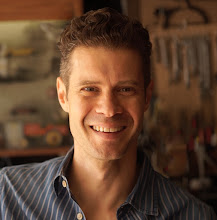Class Eight notes

final gathering
Final gathering is an approximate global illumination solution that works very well for outdoor scenes and for lighting highly detailed models. It can be used for soft shadows and for shadowing the nooks and crannies of models. Do you remember the Pepperidge Farms guy talking about the English muffins having nooks and crannies? Mmmm. Buttery English muffins…
You could light the nooks and crannies of your English muffin very nicely with final gather. What is a final gather? It is a diffuse raytraced global illumination pass. For a certain sample of the image from the camera’s view, a set of rays are sent out. When they hit a diffuse surface, more rays are sent out in a hemisphere above the point. The average brightness and color seen by these rays is used to light that point. Only one bounce is used (or sometimes two) unlike photon mapping.
So what’s the difference? Photon mapping works well indoors where you have lots of surfaces to bounce photons off of, and is more “physically correct”. But photon mapping won’t give you shadows in highly detailed models or light outdoor scenes the way final gathering will.
Lighting without lights
A particularly groovy aspect of final gather is the ability to light objects with other objects. Huh? Well, since the diffuse rays shoot out from the surface looking for other surfaces, when they encounter a bright or colorful object they’ll be “lit” by it.
This means we can use bounce cards that have bright colors or incandescence values as lights. One of the easiest ways to begin lighting for studio or automotive scenes is with large white cards that are both reflected in the shiny surface and provide light for the scene.
Another aspect of this is that you’ll see nice bounce lighting and color bleed between objects in a final gather rendering.
final gathering tutorial
• Studio Lighting with fg
• Exercise: fg lighting a rocket
• Ambient Occlusion texture
This one is great for building dirtmaps/shadow contact maps. You can take the output into your comp and multiply it against your beauty render. To use it, assign a Surface Shader to your models, and then click on the Create Render Node button next to the Out Color slot in the Attribute Editor. Choose the mental ray tab from the Create Render Node window and look for the Textures section. Click the mib_amb_occlusion button. Now, render your scene to see the awesomeness. You don't need to have any particular feature of mental ray turned on (e.g., final gather, global illum) other than raytracing.
Tune the image, increase the number of samples in the mib_amb_occlusion1 texture from 16 to 128 or beyond.
• Image Based Lighting
• HDR


• Exercises:
IBL and HDR Apartment
Here is my Maya file, in which I've done everything but add the IBL node.
Primitives
Some additional reading and links:
Light probes in HDR
Sunlight probes
Creating a light probe

0 Comments:
Post a Comment
<< Home